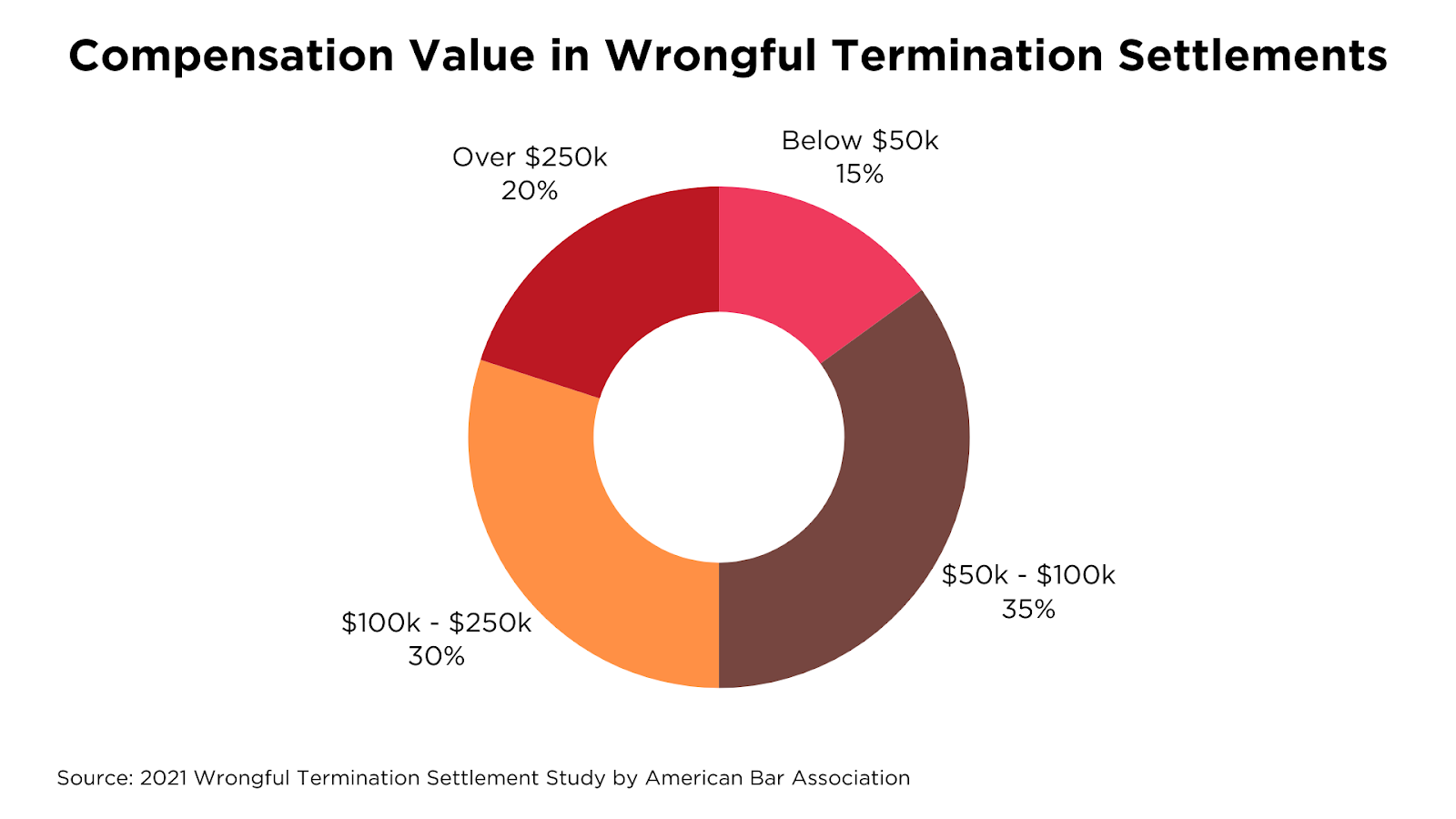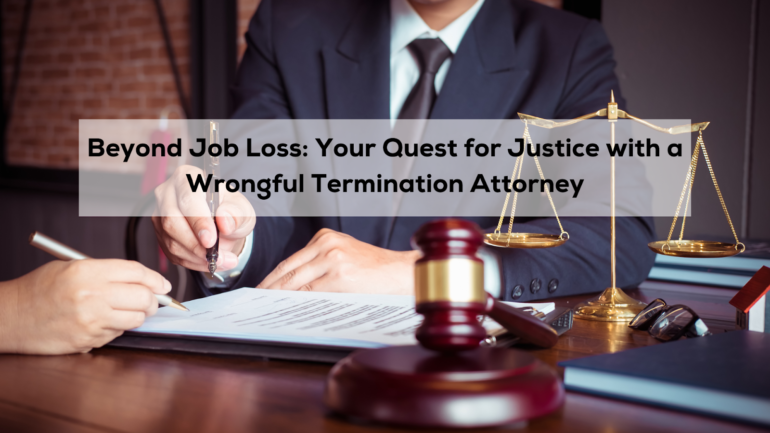Losing your job can be emotionally and financially devastating. But when that job loss comes as a result of an illegal or wrongful termination, the impacts can be exponentially worse. Far too often, employees face situations where they are:
- Fired without cause
- Let go for discriminatory reasons
- Dismissed in retaliation for whistleblowing
If you believe you’ve experienced wrongful termination, it’s crucial to understand your rights and legal options. In these circumstances, the expertise of a wrongful termination attorney can make a difference. It can be between finding justice or losing your livelihood indefinitely.
Understanding Wrongful Termination
The Legal Definition and Scope of Wrongful Termination
Wrongful termination refers to when an employer fires an employee in a manner that violates an employment contract. It also happens when they breach laws that protect workers. It can be from discriminatory, retaliatory, or otherwise illegal treatment. On a broader level, any unjust termination can fall under the category of wrongful termination. But it should result from unfair, unethical, or legally prohibited motivations.
Estimates indicate that the success rates of wrongful termination cases vary widely, ranging from as low as 30% to as high as 90%. This disparity depends on factors like the following:
- State laws
- The strength of the plaintiff’s case and evidence
- The legal resources at their disposal and more
Percentages alone do not guarantee any case’s outcome. But it is clear that employees stand a far better chance of taking on powerful employers. They can achieve favorable resolutions with competent legal guidance.
Wrongful termination can arise in scenarios like discrimination or harassment. It happens on the basis of protected characteristics like whistleblower retaliation. It occurs after an employee does the following:
- Reports illegal activities
- Refusal to comply with an employer’s demands to violate ethics policies or laws
- Exercising statutory family and medical leave rights and more
Understand both the precise legal definition and the full scope of scenarios. It enables wrongful termination protections. That is vital for employees faced with potential workplace injustice. If you’re in the Los Angeles area, wrongful termination attorney Los Angeles offers specialized expertise to assist employees. Their attorneys understand both California employment laws and the local legal landscape, equipping them to build strong arguments on your behalf.
The Role of a Wrongful Termination Attorney
Navigating the Legal Landscape
The legal environment contains the following:
- Complex filing procedures with strict deadlines
- Accepted forms of evidence and testimony
- Eligibility considerations for protections and compensation
- Proof requirements
An attorney should be well-versed in employment law to be equipped to accomplish these tasks:
- Handle communication and negotiations with former employers
- Properly file the lawsuit in a timely manner
- Admit legally permissible evidence
- Shield inadmissible documentation damaging to the case
- Determine eligibility under applicable laws
- Ensure all requisite legal proof is skillfully presented in court
The Process of Building a Strong Case
The role of a knowledgeable and tactical legal representative is multifaceted. It is important to develop a robust wrongful termination case. They will conduct in-depth investigation and research. It is to identify relevant details that construct a timeline. They aim to find a paper trail documenting instances of discrimination or other contract breaches.
The attorney pinpoints exactly which laws or contractual agreements have been violated in the process. This includes federal laws like the following:
- Title VII
- State statutes
- Common law doctrines
- Any written or implied contractual promises within the employment relationship
Compiling and exhibiting this evidence makes the foundation of proving employers’ illegal conduct. It will render the termination wrongful.
A vital component of case-building involves uncovering and demonstrating legally permissible mitigating factors. They may reduce liability on the plaintiff’s part. Certain factors can be strategically employed to weaken employer counterarguments. This especially applies if they are centered on alleged work deficiencies. Examples of those factors include:
- A positive performance history
- Instances of extra effort or flexibility
- Adherence to policies and more
The attorney guides critical strategic decisions on the best path to a favorable resolution. They attain it whether through settlement or trial. Their counsel and experience inform the choices that maximize results and justice. As such, they do more than construct arguments, gather evidence, and compile documentation.
In 64% of wrongful termination cases where a lawyer was involved, plaintiffs received some form of compensation. This number alone highlights the invaluable impact lawyers have in empowering employees to:
- Fight injustice
- Regain control
- Emerge whole again after abusive treatment
With competent legal guidance, favorable outcomes become far more achievable.
Key Elements in a Wrongful Termination Lawsuit
Proving Employer’s Intent or Law Violation
Wrongful termination claims rely on proving:
- The employer’s intent to discriminate or retaliate.
- The employer violated laws or contracts.
- Strong documentation helps demonstrate these elements.
The Significance of Written and Implied Contracts
Employment contracts may contain ambiguity or overt violations by employers. They can form the basis of a wrongful termination claim. The same applies to implied contractual obligations.
Breaches of Good Faith and Fair Dealing
All contracts have implicit “covenants of good faith and fair dealing”. It requires employers to treat employees reasonably and ethically. Violating these covenants can constitute wrongful termination in court.
In lawsuits, settlements are the most common resolution, with up to 90% of compensation resulting from settlements.
Challenging At-Will Employment
Exploring the Limits
At-will employment enables employers to terminate workers anytime without cause. However, numerous federal, state, and local laws create exceptions. They prohibit firings based on discriminatory or retaliatory grounds.
Understanding Legal Exceptions
Beyond discrimination and retaliation protections, exceptions include:
- Public policy violations
- Breach of contract
- Breach of good faith
For every ten unrepresented workers claiming wrongful termination, only about three received compensation. This exemplifies the importance of legal guidance when challenging at-will dismissals.
Specific Cases and Precedents
Analyzing Landmark Cases
Past verdicts and settlements, like Agis V. Howard Johnson (awarding $12 million in 1980) and Guz V. Bechtel ($2.7 million in 2000), demonstrate six and seven-figure awards occurring for decades.
How Precedents Influence Outcomes
The legal precedents set by prior cases directly impact the rulings in current and future cases. Skilled lawyers analyze precedents to construct arguments maximizing clients’ chances of winning.
Seeking Justice: Compensation and Remedies

Available Compensation
Successful wrongful termination cases can result in compensation for:
- Lost wages
- Loss of benefits
- Emotional distress
- Legal fees
Settlements and Court Judgments
Most cases end in settlement, avoiding lengthy court battles. This allows employees to regain control of their lives more quickly, while employers also minimize negative publicity. Occasionally, court judgments result in greater awards.
Regardless of the outcome, it’s essential to ensure the victim is made whole again.
FAQs
What constitutes wrongful termination in at-will employment?
Violating federal, state, or local anti-discrimination and retaliation laws regarding protected classes. That constitutes wrongful termination, despite at-will employment status.
How can employees prove the termination was wrongful?
Evidence helps prove wrongful termination:
- Discriminatory statements
- Inconsistently applied policies
- Retaliation timing
- Contract violations
What are typical outcomes in successful cases?
The most common outcome is a private settlement with some admission of guilt. There is also compensation for lost wages, benefits, and emotional damages. Occasionally cases result in public court judgments with hefty awards.
Conclusion
Wrongful termination can inflict heavy financial and emotional damage. But legal options and protections exist to pursue justice. Consult an attorney, evaluate your options, and take action to recover from the wrongful actions of your previous employer. With dedication and grit, you can take back control.




